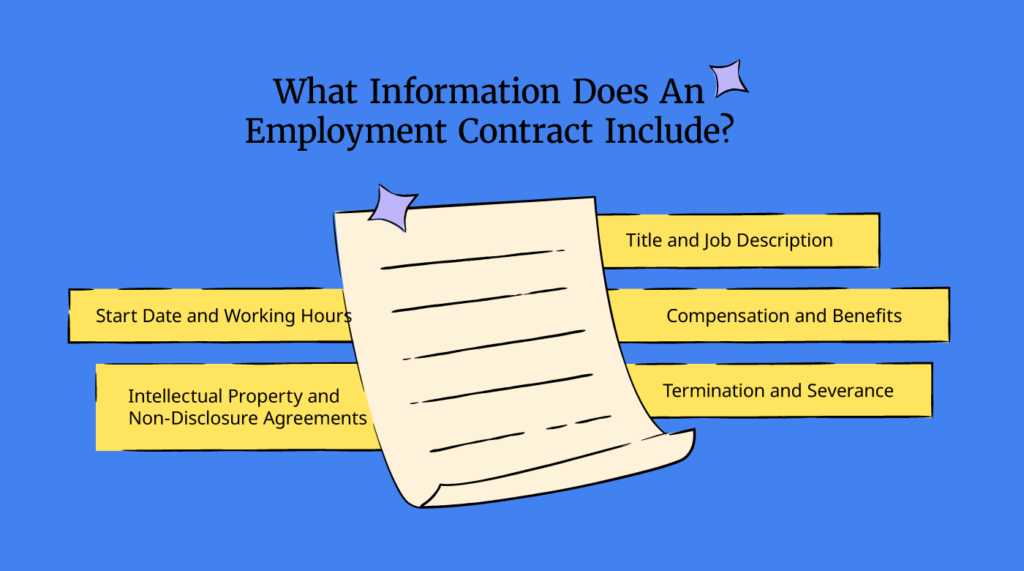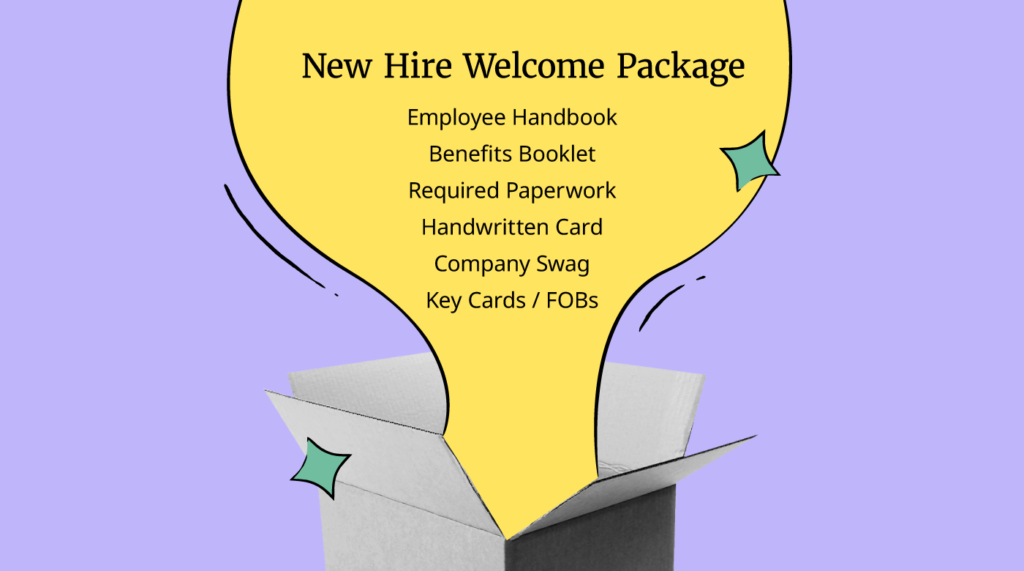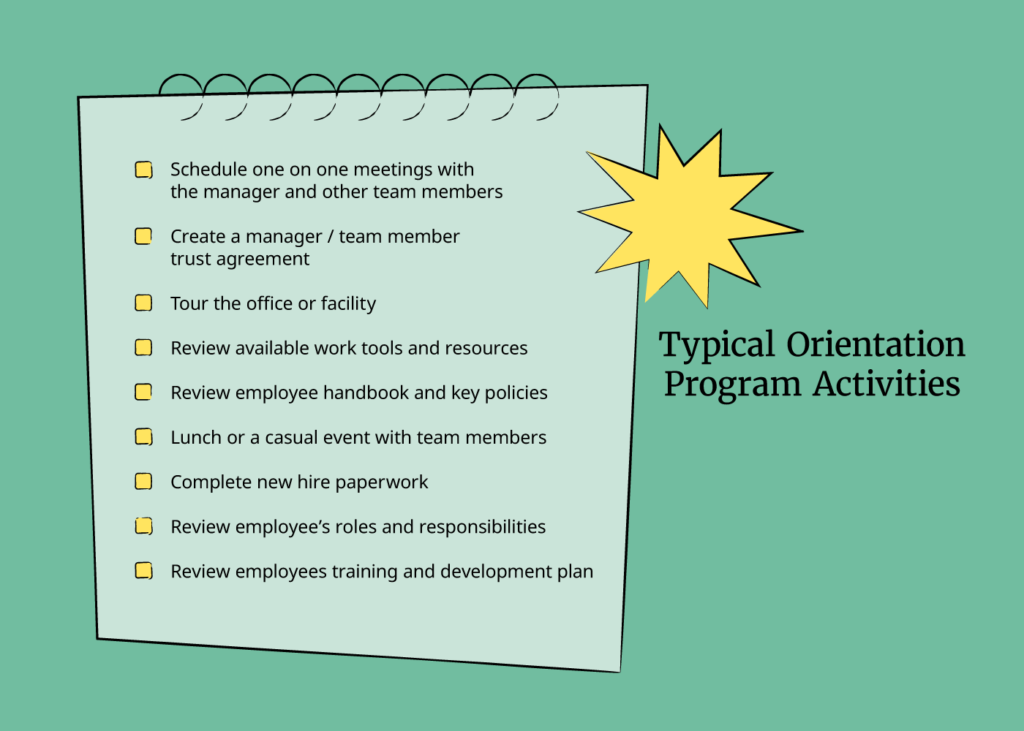After all the effort that goes into the hiring process, you’ve finally found the one. Now, it's time to onboard them.
This ten-step new hire checklist I’ve outlined here will take you all the way from making an official job offer to your new team member’s first day of work.
Why is a New Hire Checklist Important?
A new hire checklist ensures a smooth, organized and comprehensive onboarding process for new employees.
Benefits of Creating a New Hire Checklist:
- Streamlines the Onboarding Process: A checklist ensures all necessary steps are taken, from administrative tasks to introductions, making the process efficient and seamless.
- Improves Employee Experience: A well-structured checklist helps new hires feel welcomed and well-informed, boosting their initial experience and engagement with the company.
- Ensures Compliance and Consistency: The checklist ensures all legal and policy-related requirements are met consistently for every new employee, reducing the risk of oversights.
Actionable Advice: Make sure your checklist covers all onboarding stages—pre-arrival preparations, first-day activities and ongoing integration tasks. Regularly update it based on feedback from new hires and changes in company policy or regulations. Finally, consider taking advantage of onboarding software solutions designed specifically to support the creation of an impactful onboarding process.
The New Hire Checklist
The hard work of the recruiting process pays off when you bring in a new hire, but you're not over the finish line yet. Your new hire check list should help you set them up for success and avoid some common pitfalls.
A common pain point in the onboarding process is information overload. New hires often receive a large amount of information about the company, their role, policies, and procedures all at once, which can be overwhelming and challenging to absorb effectively.
This can lead to confusion and a slower adjustment to their new role, impacting their initial productivity and job satisfaction.
- Present an employment contract
- Welcome the new hire
- Send a welcome package
- New hire orientation materials
- New hire paperwork
- Work tools and resources
- Prepare orientation agenda
- Create a training and development plan
- Involve senior leaders
- Provide opportunities to meet, greet and learn
1. Present your new hire with an employment contract
An employment contract is a formal agreement between an employer and a new hire that outlines the terms and conditions of employment. It serves as a legally binding document that details the responsibilities, rights, and roles of both parties.
Presenting a new hire with an employment contract is a crucial step in establishing clear expectations and protecting the interests of both the employer and the employee.
Checklist for Employment Contract:
- What to include:
- Job description and title
- Start date and employment duration
- Compensation and benefits
- Work hours and vacation policy
- Confidentiality agreement
- Termination conditions

Benefits
The employment contract provides legal clarity and protection, sets clear expectations for the role and outlines the person's compensation and benefits clearly.
Something to remember
Before presenting the contract, review it to ensure all terms are fair and legally compliant. During presentation, explain each section clearly and allow the new hire ample time to read and understand the contract, encouraging them to ask questions or seek legal advice if needed.
2. Welcome the new hire with a call and email
Welcoming a new hire with a call and email is the first step in making them feel valued and part of the team.
This personalized approach helps ease any anxieties they might have and sets a positive tone for their upcoming journey with the company. It's a simple yet effective way to start building a strong employer-employee relationship.
What Welcoming a New Hire Consists Of:
- A friendly welcome call from their direct manager or HR representative.
- An introductory email providing essential information about the first day.
- Contact details for any queries they might have before starting.
Benefits
A good welcome call and email creates a warm and inviting first impression while demonstrating the company's supportive culture. Good execution of these early communications will help alleviate new job jitters.
Pro Tip: “Send a welcome email or video to the company introducing the new hire, and share a few fun facts about them. This is a great way for people in the organization to get to know their new team member.” - Lorie Corcuera
3. Send a new hire welcome package
Everyone gets excited when they receive an unexpected gift in the mail or delivered to their door.
According to Corcuera, a new hire welcome package can include things like:

- Handwritten card, signed by you and their new teammates
- Company “swag”, such as t-shirts, coffee mugs, pens, and notepads
- Employee handbook, in physical format, or (ideally) digitally on a USB stick
- Key cards/fobs, to access company facilities
- Benefits booklet, outlining medical and health insurance benefits
- Required paperwork, such as payroll and insurance forms
Benefits
A new hire welcome package sets a positive and welcoming tone for the employee's journey, fostering a sense of belonging and appreciation from day one. It also provides essential information and resources, aiding in a smooth and informed transition into their new role.
Something to remember
Make sure that your new team member will receive the welcome package well before their first day of work, and ideally just a day or two after your welcome call.
4. Send a new hire orientation email
A new hire orientation email will contain significantly more detail about what additional information your new employee can expect to receive before their first day and what they can expect their first day and first week of work to look like.
Essentially, it summarizes the rest of the steps in our new hire checklist.
What should be in a new hire orientation email?
Following are some of the types of information you could include in this email.
- Start time and location: when and where they should be for their first day. If there are special instructions for car parking, be sure to include them.
- Key contacts: include who they will first meet with on their first day (typically human resources, managers and immediate team members) and other people they’ll likely rely on in their first week.
- Dress code: this is an often overlooked aspect of the first day. Letting them know what the dress code is, if any, can help avoid unnecessary embarrassment.
- First week agenda: give your new hire time to mentally prepare, but keep it high-level. For example: Day 1 - meet the team, building tour. Day 2 - business overview.
- Team members: provide them with an organization chart that includes your team. They can use this together with LinkedIn to familiarize themselves with their new colleagues.
- Key policies and processes: highlight 2-3 of the key ones that will impact them on day one. If you’ve sent them an employee handbook, point them to the relevant sections.
Benefits
By clearly defining what the first day and weeks look like for a new hire, the orientation email helps to alleviate any initial anxieties by setting clear expectations and providing a roadmap for their early days in the role.
Actionable Advice
The email could be quite long, depending on the information you include, so you might want to preface it with a warning to your new team member to take their time in going through it all.
For further guidance, and a handy template, check out my article: Welcome Letter To New Employees Before Their First Day [Sample]
5. Arrange for new hire paperwork to be completed
According to Sapling HR, the average new hire will be assigned 3 documents to sign, upload or acknowledge.
New hire paperwork is a necessary, but often boring, part of the onboarding process, so encourage your new team member to complete as many of the required forms as possible before their first day.
This frees the two of you up to focus on more important and exciting aspects of their new job.
What types of paperwork does a new employee need to complete?
As a general rule, any type of federal or state related paperwork concerned with identity verification such as I-9 forms or taxation (e.g. TD1 in Canada, W-4 in USA) should be completed by the end of the employee's first day.
Depending on your organization, the new employee will need to complete forms related to:
- Payroll / direct deposit
- Acceptance of Terms and Conditions for use of company property
- Medical coverage (e.g. MSP in Canada)
- Extended health insurance
- Group RRSP / 401(k) enrollment
- General employee information (e.g. date of birth, emergency contacts)
Pro Tip
Generally speaking, the sooner these forms can be filled out the better, so aiming to deliver them in a streamlined manner once the offer letter is accepted and signed is a good practice.
That way, the employee's first days aren't entirely filled with excessive administrative tasks and you can help them focus on hitting the ground running.
6. Prepare the new hire’s work tools and resources
It’s important to prepare in advance, as much as possible, everything your new team member will need to be successful in their new role.
You will probably need to have many of these things ready before their first day, while others can wait, depending on your orientation and onboarding plans.
What resources should I prepare for a new hire?
Following is a sample list of work tools and resources that you may need to have prepared, depending on where the new team member will be working (remote work from home, or in office), what they’ll be doing and what you may have already provided in the New Hire Welcome Package.
- Workstation - office, cubicle, or shared workspace; desk and chair (consider a sit / stand desk); filing cabinet; office supplies and stationary.
- Computer equipment - laptop, desktop, and / or tablet computer; monitor(s); docking station; mouse and keyboard.
- Communications - mobile phone; telephone landline; video conferencing equipment.
- Network access - shared network drives; company intranet; email address; email list access; remote network access.
- Software licenses - office productivity; project management; R&D applications.
- Office / facility access - key card or fob; building alarm codes; ID badge.
- Travel resources - business cards; product demonstration kits; company-branded clothing.
Actionable Advice
You can run through this entire checklist of items with your new team member on their first day, but that can quickly get overwhelming.
It's better to go through the items as needed and involve managers and people responsible for managing performance of certain tools or platforms as the employee becomes more involved.
7. Prepare the orientation program agenda
Your orientation program, which is part of a much longer onboarding process, will probably last around a week but can be up to a month.
Creating a new hire orientation agenda will serve as its own checklist to ensure nothing is missed in the employee’s first days and weeks of onboarding.
What are some typical orientation program activities?
Look at the orientation program like you’re building a tower, which starts with laying a strong foundation upon which they can continually layer on new learnings.
For example, the new team member’s first few days might include some of the following activities:

Benefits
Your orientation program is a great opportunity to have a structured conversation around roles, company culture and expectations. This comprehensive introduction enhances early engagement and lays the groundwork for long-term job satisfaction and productivity.
Pro Tip
Focus on creating an engaging and informative experience. Integrate elements of fun and warmth to make new employees feel genuinely welcomed and valued and ensure the program is adaptable and regularly updated based on feedback.
8: Create a training and development plan
A key part of orientation and onboarding is to set the new team member up with the tools, training and resources they’ll need to be successful.
According to Tamara Wilson of FLIR Systems, there are six key steps to follow to build a successful training and development plan and implement the program for your team members:
- Assess the audience / team / learner’s needs
- Identify the objectives / anticipated outcomes
- Design a training plan outline
- Build the program
- Optimize engagement
- Evaluate the success of the training
Related read: Best Employee Training Software
Benefits
Incorporating a training and development program in the onboarding process equips new hires with the necessary skills and knowledge for their roles, accelerating their productivity and competence.
It also demonstrates the company's investment in their professional growth, enhancing job satisfaction and long-term commitment.
Actionable Advice
Tailor content to align with specific role requirements and company values, and use a mix of learning methods like workshops, e-learning and mentorship. You'll want to regularly update the program based on feedback and evolving job needs to ensure its continued relevance and effectiveness.
9: Involve senior leaders in new hire orientation
Members of your senior leadership/executive team should look to help with orientation and be involved in activities like:
- Deliver a company presentation
- Give a tour of the building or facility
- Present a specific training topic
- Take the new team member out for coffee or lunch
Why should senior leaders be involved in orientation?
Involving a senior leader like a founder, for example, gives that person the opportunity to teach the new team member, tell stories, and talk about company values, guiding principles, and culture.
Benefits
Bringing senior leaders into the room will show their investment in staff, make them feel more accessible and help encourage the new team member to feel a sense of belonging and inclusion.
Pro Tip
“It’s easy to get focused on job tasks, procedures, and processes. Integrating the employee into the company’s culture early on will connect the employee to their role, teams, and larger organization. It is the common language that connects all employees and makes the new hire feel more comfortable from the on-set.” - Tamara Wilson of FLIR Systems.
Step 10: Provide opportunities to meet, greet, and learn
As part of your new hire checklist, schedule short introductory meetings with key members of the organization and the new employee’s team.
You can also encourage and assist the new team member to schedule these themselves during their first week. This gets them using the work resources you’ve provided in the previous steps.
Actionable Advice
“One thing we do at Jostle that really helps is a 15-minute chat with the new team member and someone from every department/business area to hear what that team does and how they work with others. This means the person is (a) meeting roughly 12 people they wouldn't normally connect with; (b) they're learning about the business and that we're all responsible for it; and (c) they start to understand where they fit in, and what their contribution means.” Bev Attfield at Jostle

Get Our New Hire Checklist
Remember: You can get my downloadable new hire checklist below to walk you through all of these steps.
Build a Better Onboarding Experience for New Hires
What are some other critical steps that should be included in a new hire onboarding checklist?
How extensive is your new employee orientation program? These are questions that answers may vary for. Seek advice from other people in your industry or field and apply the feedback you get from employees to craft your new hire experience.
Want to discuss your ideas with a group of peers facing the same challenges? Join the People Managing People Community!


